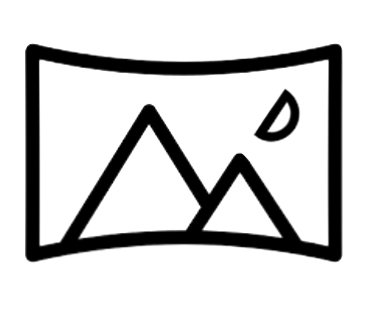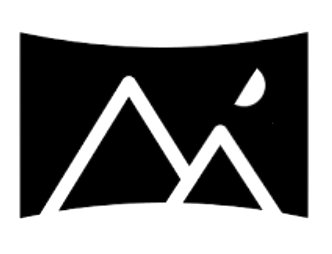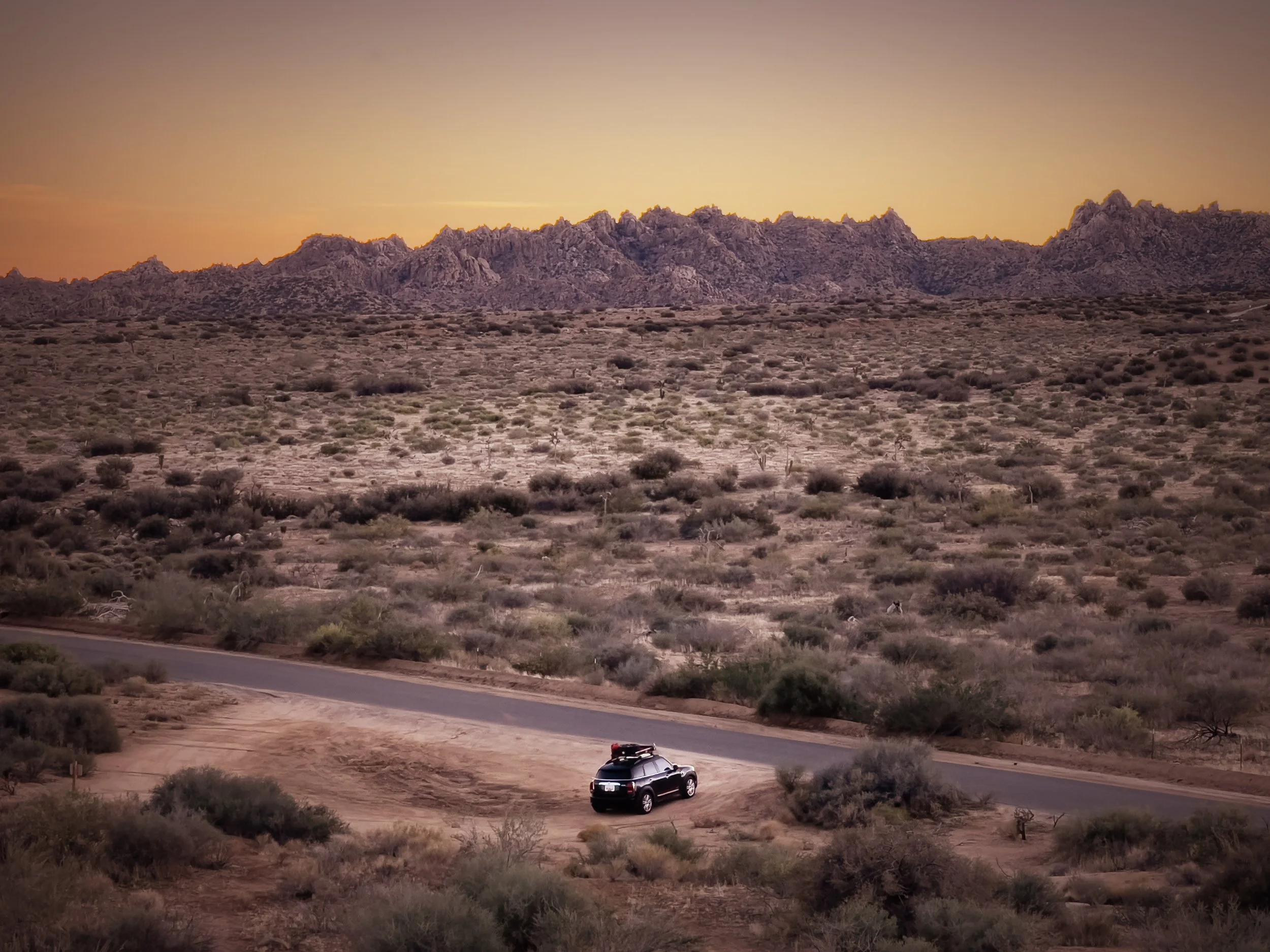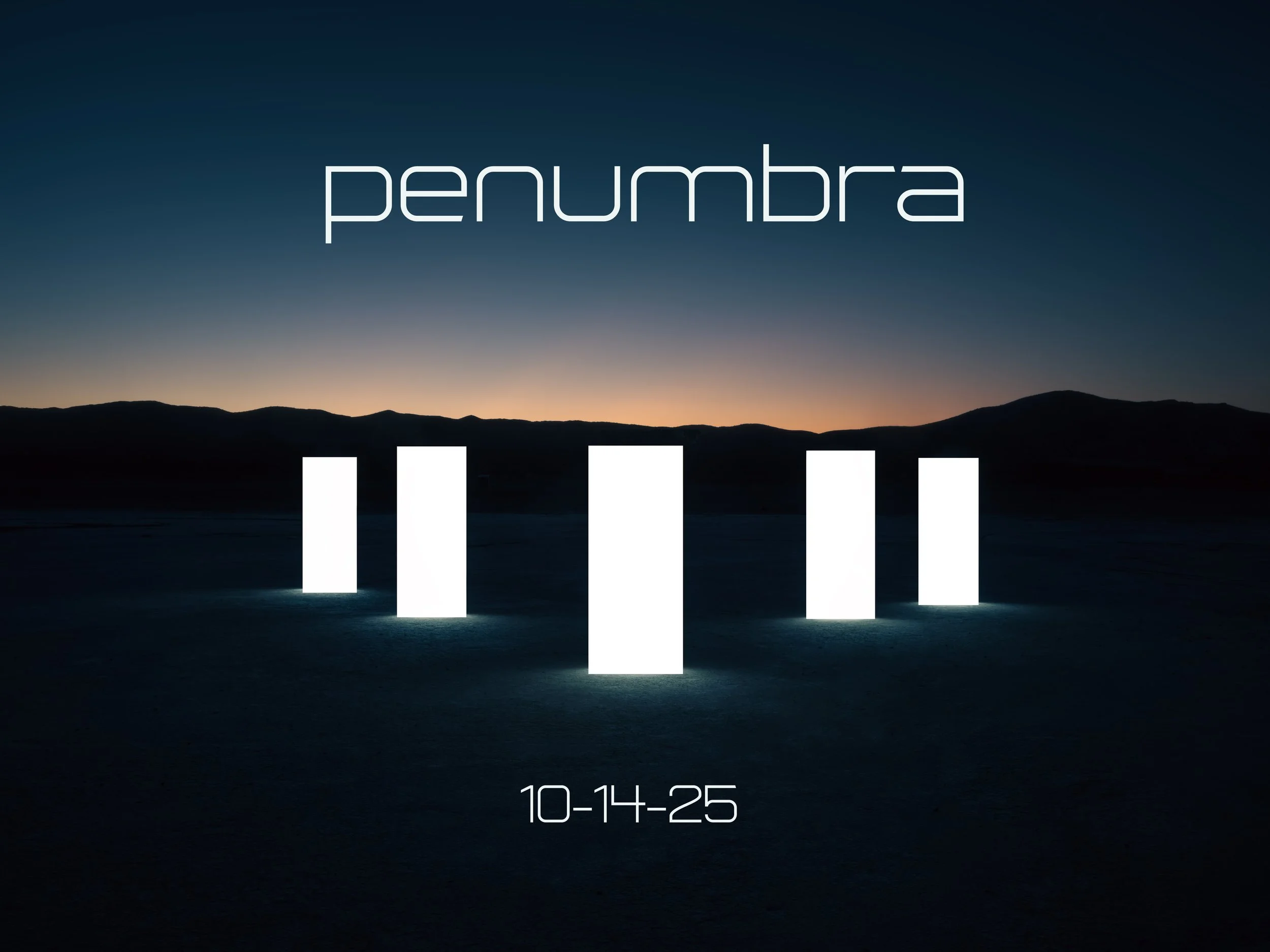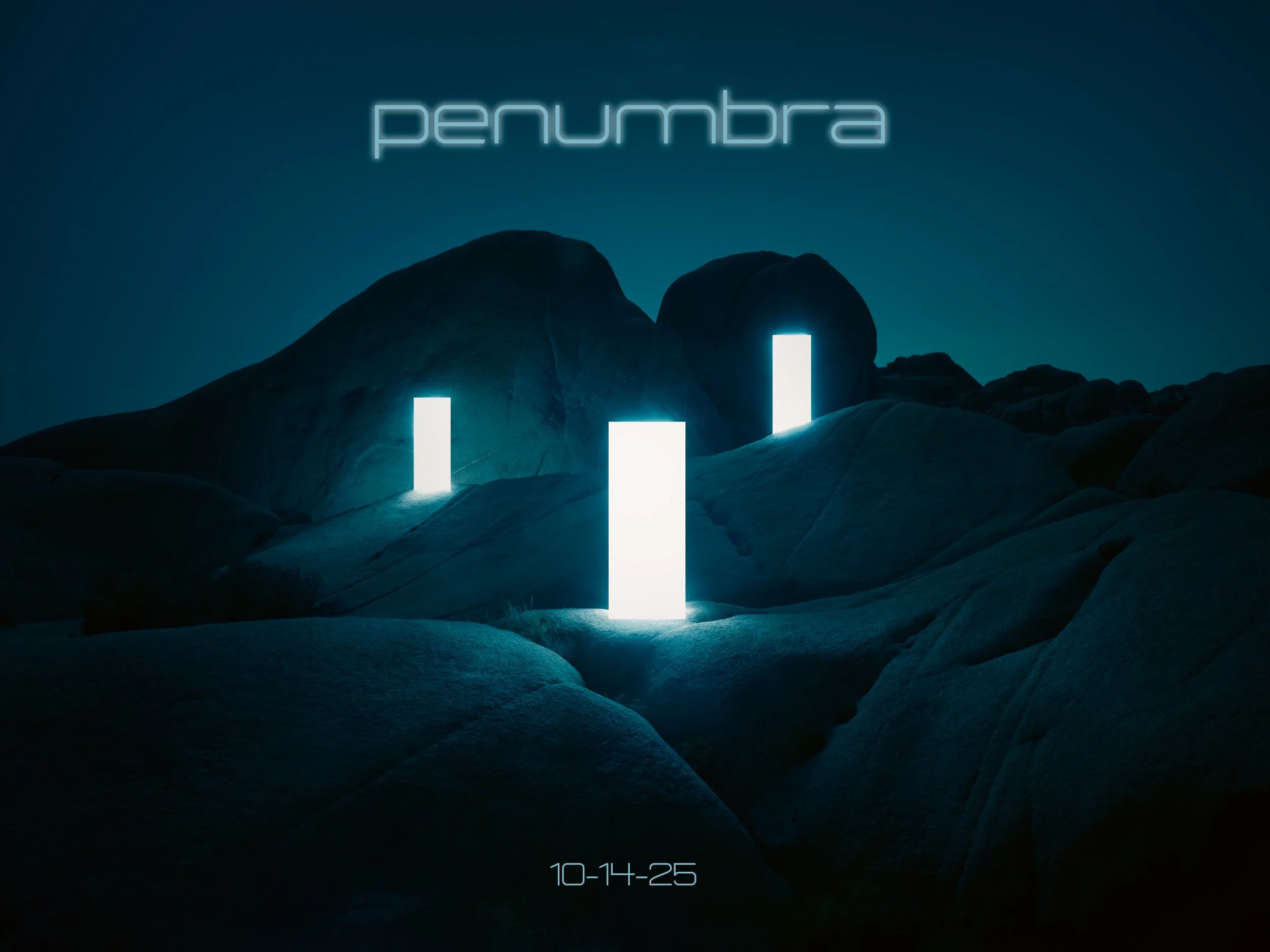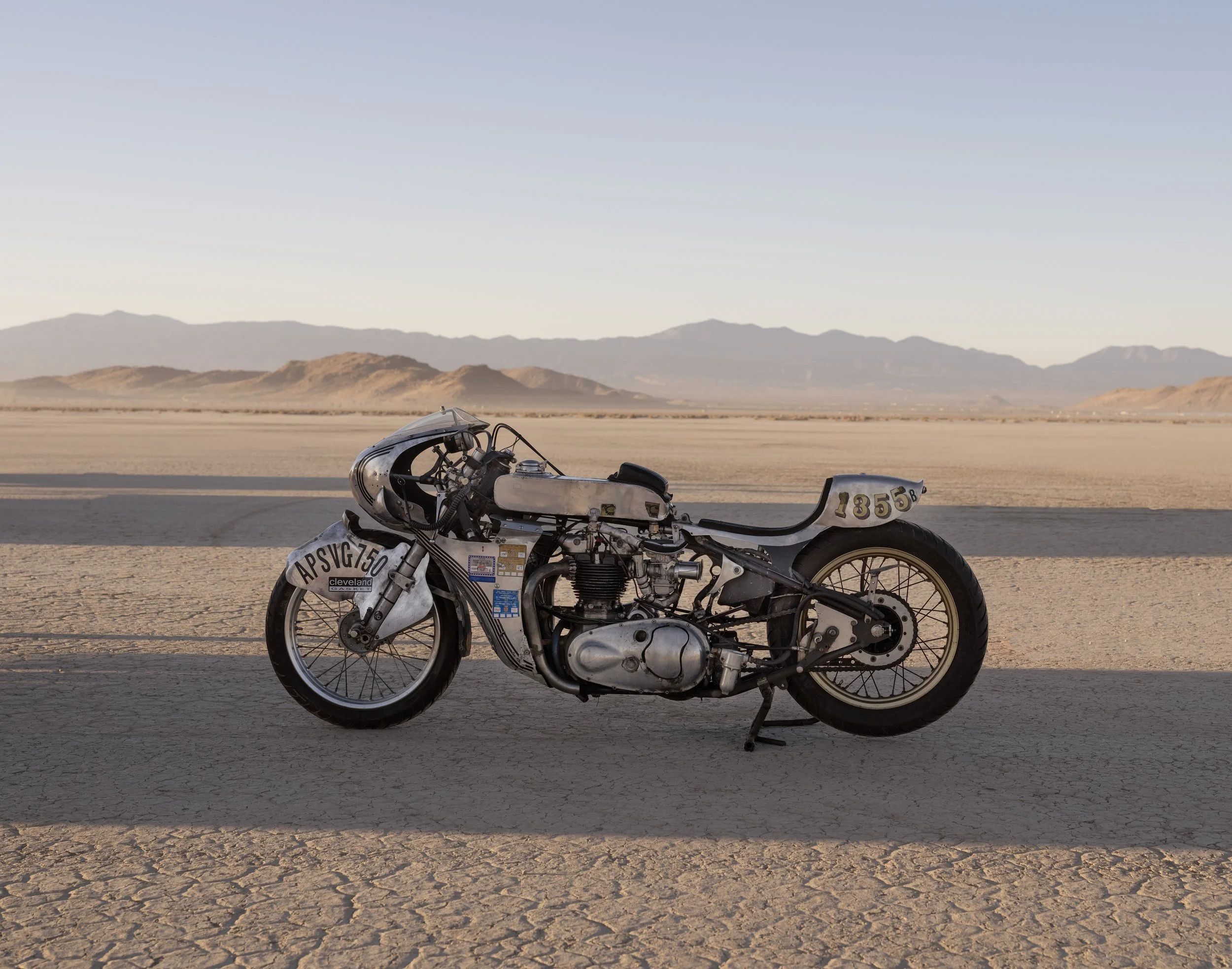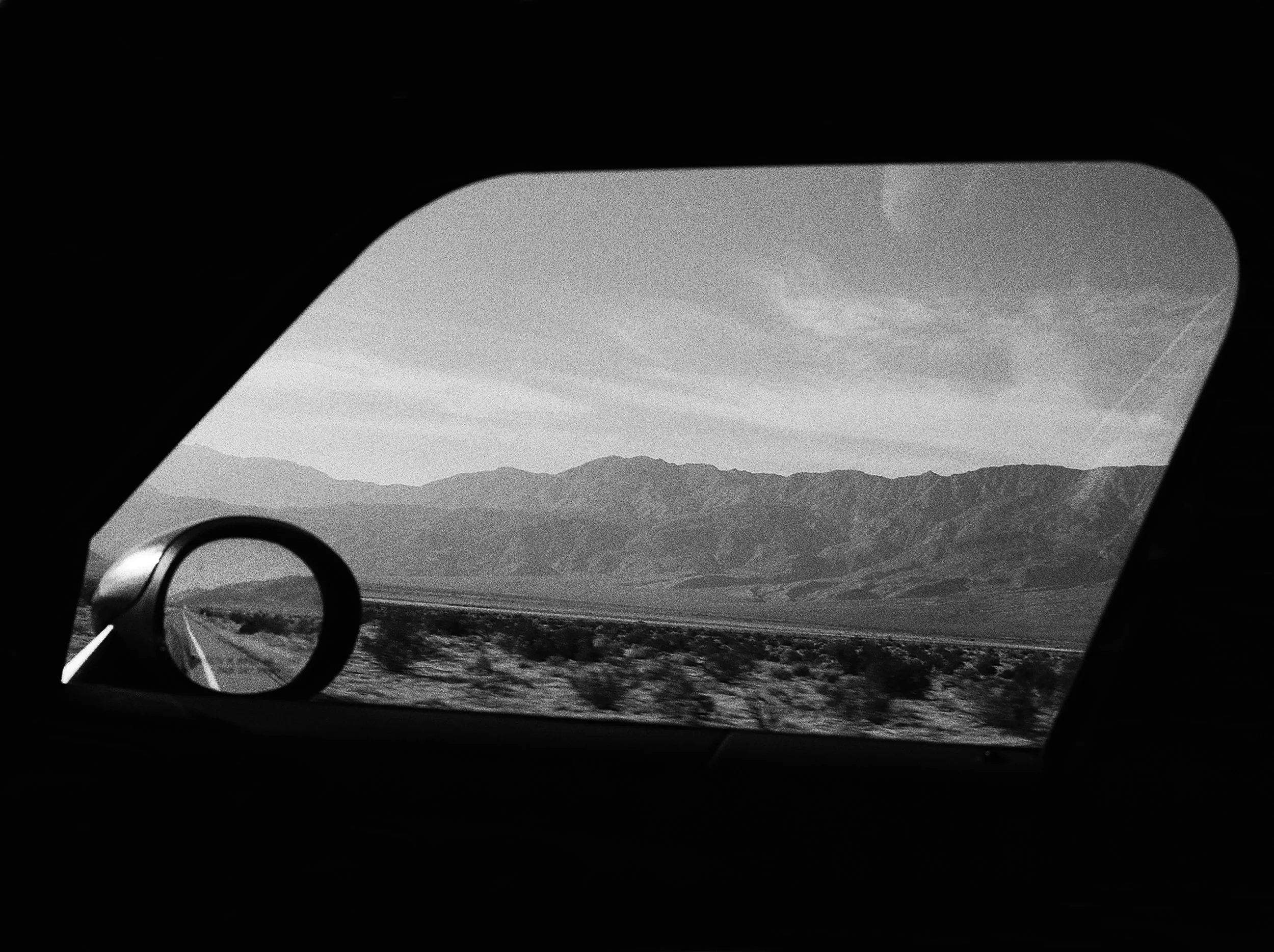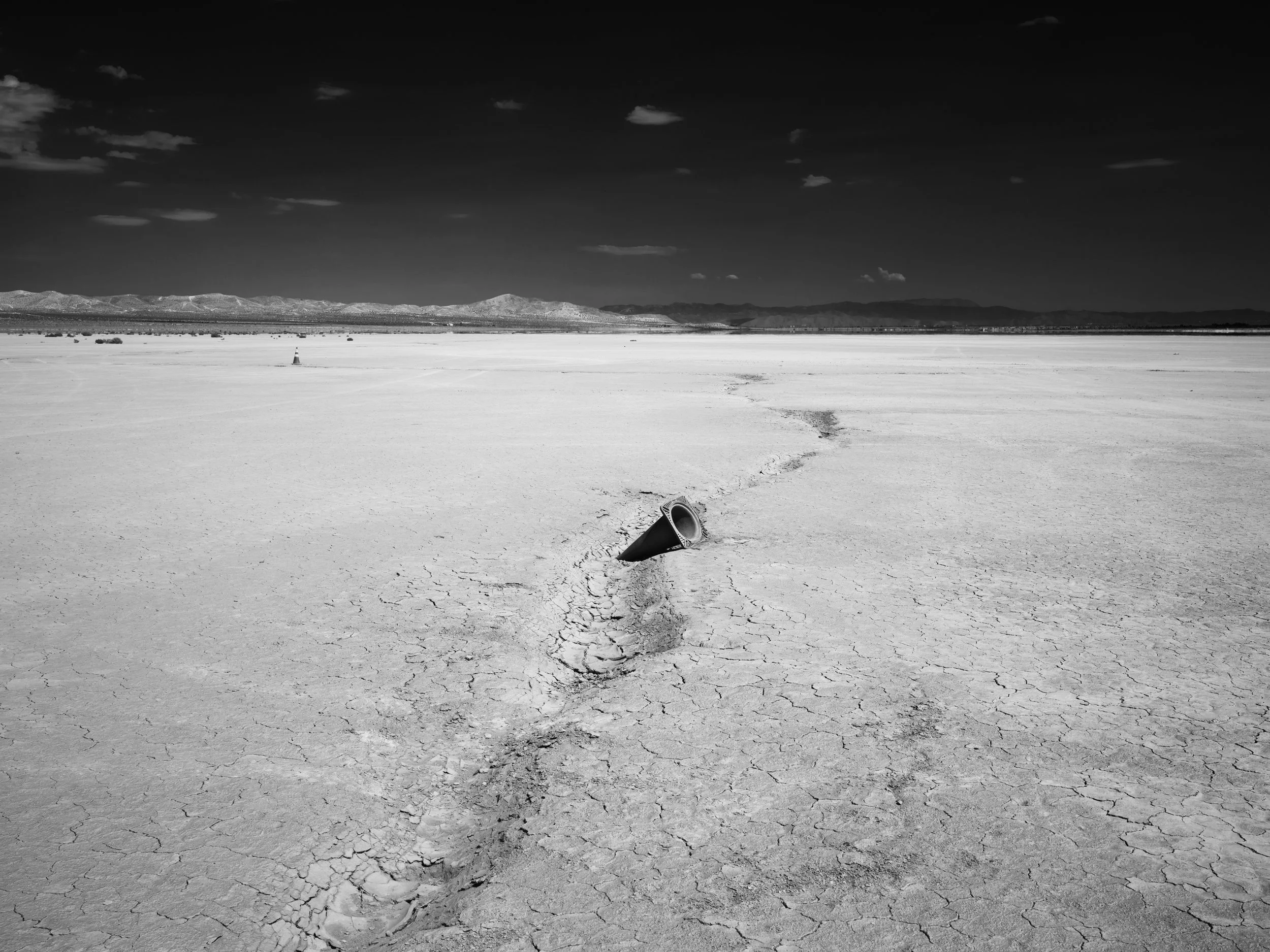Whats the worst that could happen..
Joshua Tree, November 2025
The only reason I take smartphone out of the car when shooting is in the event I fall down a hole. Even then, there would be no signal, but perhaps the emergency GPS would work, but how do we actually know without falling down a hole. I always liked the idea of a Breitling emergency watch, but not at those prices and the potential financial cost of using it. In short, whatever device one chooses, it will never make you any safer. In the old days you would just tell people where you were going and when you would be back, still the best policy and only one I really use. I once sat next to someone on a plane who had an Air Tag in there stowed luggage. Although a good idea should the luggage go missing, he spent most of the flight checking the App. Much to his dismay, the tag stopped working once the plane took off. According to him, it had either fell out of the plane on take off, or someone had snook into the cargo hold and stolen it.
(And another thing…) When I was working commercially, I was given a Blackberry Phone. The agency would get so upset when I turned the phone off while on a shoot so I wasn’t distracted. Secretly, I enjoyed how upset they got, but that was twenty years ago..
One of life’s simple pleasures is disconnecting from phone calls, texts and emails and be free from the distractions of the world. But I do have to admit to using my phone to make the image above rather than taking my camera off the tripod.
A storm brews..
I have come to hate social media so much I am tempted to remove the instagram symbol from this very page. What started as a foray into, here’s some pics I did, why not look at my webpage, has become an advertising-algorithmic-over saturated-bag of fruity turds desperately in need of a thumbs down option. YouTube is no better either with everyone having the right answers as well as being the worlds authority on nothing. The last video I watched (and showed to a group of senior students in the middle of putting their final projects together in dummy book form) was a guy claiming he shot 90 good images a year, sorry, 90 excellent images a year and that without instagram no one will buy your book. Obviously he was too young and daft to remember that books have been around a lot longer than any online platform and people like to go to book shops and buy a book. But what it all boiled down to was that basically anyone can make a book these days. To me this is no different to thinking your own life story would make a great novel, or a film and assume that everyone will be interested. Just because you can, doesn’t necessarily mean you should. What many also fail to see is that producing books cheaply and selling them cheaply takes away any value the work might of had to begin with. But that’s just my opinion (maybe I should have a youtube channel). Viewers on social media are not your audience, they are just spectators..
Two Mirrors. First Color Print sale (Paris Photo).
The last time I was at Paris Photo was back in 2004. I flew out from LA and remember flying through a storm creating enough turbulence to have passengers (including myself), screaming and thinking this was it. But worse than that they stopped serving food and I arrived in Paris hungry and a little roughed up. It was the launch of my first book, Night Vision- Intimacies of an Unblinking Eye at a time when my work sold on a more regular basis. I loved those trips to Paris and often feel a little sad when Paris Photo (now in its 28th year) comes around and for whatever reason I am not there. Paris Photo is also where I sold my first color prints (actually a set of 10). I had only been making color work for a year or so and was not even sure if there was a market for the fruity landscapes I was producing. It was the start of something new and exciting, or rather, “nouveau et passionnant”.
Where in the world..
The worlds most uncomfortable picnic bench.
I remember driving along a deserted road in America and seeing this scene of a yellow concrete picnic bench. I remember how I felt at the time (hungry and tired), and I remember what camera I used as well the aperture. Other than that I have no clue as to where, or when this image was made.
I have never been good with dates, times and place names. This something which now haunts me as I continue to edit my Accidental Tourist project. But in truth the exact location doesn’t really matter. The fact that it was shot in America between 2004 and 2024 is enough.
The process of looking back through work can be a little laborious at times, but in the end totally worth it. Otherwise, what was the point…
The edit continues.
Somewhere over the Rainbow.
Somewhere over the Rainbow. Indiana 2021
After an event like my recent show Penumbra, or the completion of a long term project, one is always left feeling a little empty, unsure of the next steps. I recently spoke with a colleague on this very subject at my own show. He too had just finished a show and was feeling a little lost as to what to do next. Being fortunate to have done many shows over the years, I knew this was coming, and it was no secret that I had already started a new body of work (not that Penumbra is over). Not only that, I had also begun the edit of a major project started more than 25 years ago, that is, The accidental Tourist. This project has been on the edit list for a while now amassing over 500 images, many of which still need to be printed. The work is not groundbreaking, neither is it particularly original, but it does present a worthy document of an English man’s visual diary living in a foreign land.
70 Years ago..
It seemed fitting to post something on the 70th anniversary of James Deans death today having spent a portion of time in Marion Indiana. This image was not chosen in bad taste, but was the first image I made in Marion, a clapped out Mustang at the bottom of my street. It was to be one of the many abandoned cars I would encounter within the moisture of the land locked mid west.
Despite it’s horrors, my time in the moisture was most productive, amassing a large body of work romanticizing the mid west. Some places are just there to photograph providing countless opportunities, beautiful light, and an abundance of material.
Looking through the work, it seems James Dean was not the only good thing to come out of Marion Indiana.
Well the Penumbra work is out there now and with only 2 weeks until the show. Making big prints of the work has been a joy, something which was very intentional from the beginning which even meant buying a new camera in order to get a larger file size. It was like going back to 8/10” film, not only in quality, but thought process and the slowness of using a large format. The last show I did using large format film with this size prints was Thursdays by the Sea in 2015. Little did I know that a few years later the internet would change everything. Galleries would change, go online, and many would close their doors altogether.
So much has changed in the past 10 years since my last big show, and yet so much has stayed the same..
Muddy Boots.
There’s a strange in-between-time during the build up to a show when you don’t want to work on that particular project through fear of producing an image that would then look good in the show, but would mess things up as you already have a floor plan and the prints done. There also needs to be a break, a time of contemplation and reflection, at least that’s what I like to call it.
Heading out to the Imperial Valley this week with just a camera (no tripod or lights), was a refreshing experience and a reminder of why I started making pictures in the first place. It was also nice to head out in the daytime, especially as the sky began to bruise, my favorite daytime light. There was no agenda, no project idea, just a warm wind and muddy boots.
Entering the Vortex
Vortex; A believed hot spot of heightened, swirling energy that, according to spiritual belief, magnifies spiritual, mental, emotional, and physical experiences, promoting healing, insight, and balance.
As is often the case with many projects, Within The Vortex came about from working on another project, In this case Penumbra. After spending copious amounts of time in Joshua Tree in and around its so called Vortex, I began finding these trees, some hundreds of years old. Despite the most hostile of conditions they somehow survive, often hidden from view and waiting to be photographed.
As much as I like how they’ve turned out, they were not so much fun to do. I’ve been stabbed, cut and grazed placing the light behind the tree. Its almost as if they do not want o be photographed..
They are also a little spooky…
“At night the desert brings a sense of calm like no where else. There is a stillness, and yet, you can feel the world turning and hear its silence.
The nocturnal desert is often described as looking like another planet. In addition, a portal emphasizes the idea that we have arrived in another world or the possibility that we are about to leave. But this is not another planet and the alien presence is human.
In Biblical scripture, a portal is a symbolic doorway that represents a transition between realms or states of being. Penumbra is a man made presence that does not belong, but presents a doorway into this world or the next.”
*****************************************************************************************************************
I began the Penumbra project two years ago at a time when people, especially actors, were shouting about robots taking over their jobs in an AI world. I pretty much kept the project to myself and never published anything online choosing to only show a select few people, the response being either, ‘Amazing! or ‘Interesting.’
Keeping things under wraps was not through fear of people copying the idea, although there was a little of that, it was more a case of not wanting to reveal anything until I had a body of work. I wasn’t interested in talking about an idea or showing a lot of experimentation which can often lead to self doubt and even abandonment of the project altogether. Some folk even thought I had stopped shooting, little realizing I was working through the night on my ‘secret’ project. The thing is, projects were always like this in the days of film and print. Despite the ease of online access today with digital, I still think its a good thing not to reveal too much until the project has some weight. Photographers are too quick these days revealing a project idea after 2 or 3 images only to drop the idea later or have someone sweep in and finish the project for them..
At first glance one would assume I went out, made the landscape, and then added a portal of light in post-production. But what would be the point in that? The most important part of the project was to do everything in camera. For instance, adding an artificial light source often produces unpredictable results, something which became addictive. It could be argued that AI would have made things a whole lot easier, but all the creative process would have been lost. Despite the unpredictability of what the light would do, there is still an element of control here, and in this day and age control has to take priority.
This new work is not as much of a departure as people might think. Its still landscape, its still night photography, and it still has an element of the man-made within a natural environment. And so with that in mind, I bring you Penumbra.
Accidentally on purpose.
Air Museum, Palm Springs, CA
Sometimes its just nice to wander around with a camera and photograph random stuff. People often try and justify this kind of work (particularly true with street photography, or social documentary) but often its just not needed and in the end, who really cares. Making pictures without purpose is usually the first thing anyone does when they first pick up a camera, and therein lies one of the joys of photography. What people won’t tell you is that all the meaning and philosophy usually comes later.. I spent the best part of 10 years photographing random things in America before realizing it was the perspective of a tourist and not someone who chose to live here. That selection of images became know as, The Accidental Tourist. It was never intentional, just accidental..
Put it over there.
1355, El Mirage, CA
In the Art World, there’s no real way of telling what images people will buy. It’s not as simple as just liking an image. Often there is another reason, a theme, or memory of place perhaps. What I do know is that trying to make images you think people want rarely works (been there done that).
In a market flooded with cheap, over saturated, badly printed images on canvas, to sell an editioned fine art print can be a challenge. The other day I sat in a waiting room confronted by an image of a palm tree at sunset, on canvas, with colors resembling a candy store. It was perhaps one of the worst photographs I have ever seen of a palm tree at sunset, but someone liked it enough to buy it and hang it on a wall for all to see. Whether or not I would want one of my images in a waiting room, remains to be seen. But an image in a swanky hotel foyer, well that’s different (see above).
The One.
Joshua Tree, August 2025
For the past several months I have headed out to Joshua Tree to work on my latest series. Its a wonderful experience working at night in a place where the rocks are warm and the skies so clear.
As mentioned in previous posts, returning to the same area, at least for me, has always produced the good stuff. Despite having made more than 20 trips I feel like I am only just starting to discover the good stuff, usually off the beaten track away from any hiking trails and footprints. Having said that, my last three visits had me looking for a single Joshua Tree, but with no good outcome. It may be an impossible task due to the fact that there are thousands and I just need one to look a certain way. They are either too big, too small, or too funny looking. Or maybe its just an excuse to make more trips..
Plodding on..
There is certainly no ease in the easing back into the fine art market. Back in the early 2000’s I was fortunate enough to make enough from print sales alone allowing me to make more work. It was a living for a while, but certainly not something I could imagine happening today without substantial back up. Looking back, I appear quite successful having sold out editions on several images (key to raising the profile of any artist). I have books, a decent amount of solo shows under my utility belt, received several good sized grants, and most importantly, have amassed what I consider to be a solid body of work. But in today’s digital world no one gives a stuff. I am not really sure how a mass of digital followers can work in a fine art market. They are certainly not going to shows or buying prints, especially when they can just look at a 2” square on a phone, but there you go.
Vintage prints, that once staple that propped up the contemporary market, has changed dramatically in the past decade now that all the prints have been found under old mattresses and auctioned off to the highest bidder. Digital prints still raise the question of longevity with C Type print processes almost gone and becoming the new vintage.
So here we are in a world where everything is becoming virtual. But the last I heard, digital photo frames were not a thing, and people still want prints on their walls. Digital images have not saved the rain forest and not processing films hasn’t saved all the little fishes. What digital has done is made the photographic print more valuable than ever. And that is what keeps me plodding on wards.
Should I stay or should I go.
El Mirage, CA
Many landscape photographers travel somewhere in the world and respond to it environment before packing up and heading off somewhere else. Others stay in a certain area and respond in a similar way, but return to a particular local spot many times to fulfill a body of work. I am definitely in the second category and have always responded to my surroundings. In doing so the work will always reflect a time in ones life when you were here, there, and everywhere. ‘Staying put’ and concentrating on a particular area allows us to work within boundaries, and therefore push them. You know what the light will be doing at a certain time of day, or where that rusty old wreck hangs out.. For me, early on, there was nothing more frustrating, and unfulfilling, than arriving somewhere with limited time while trying to find something to photograph. There’s a big difference between planning a shot or hopefully finding one. Although the process between the two is very different, both can be fulfilling, and both can go wrong.
However much you plan, no shoot is fully controlled. Its an organic process, but therein lies the joy of photography… Or the nightmare..
Vintage..
Square Trees, Palm Springs 2000
I don’t often look back at old work these days. I guess if I made images of people it may be a little different, but with my kind of landscape there’s not really a sense of remember this, or remember that. But in truth, that old work just doesn’t motivate me like it used to. Besides that, the work always had a limited audience. It was never the kind of work hundreds queue up to see. But there is an irony here in that limited work is what people buy, and that audience is very limited. The people paying big money for a print are not scrolling Instagram and certainly not looking for who has the most followers and likes. In fact the people I am talking about probably don’t have an email account and still send postcards.
I used to think that the internet killed the fine art market in photography, but the market never went away, it was just been pushed aside by the bombardment of new digital imagery.
For the purposes of the internet, the image above is a digital, but the print itself is a C-Type (chemically produced) printed by hand, by me, from a negative. The print will outlast any modern inkjet print and I doubt if I will print another. It is a vintage print, and that’s what people buy.
After 20 plus years, my old work now has value. But whether or not someone wants it is another question..
The Middle
Being a mid-career artist (at least that’s what someone referred to me as the other day) often has me looking back at how far I have come since those early days as a frustrated youngster trying to make my mark in the art world. The way I shoot has not changed and neither has the content of mixing nature with the man made. What has changed are my motives. The dreams of having a solo show and the hope of selling lots of work went away many years ago (thankfully after having solo shows and selling a modest amount of work). When my concentration shifted to producing more unique bodies of work few would be interesting in buying, as an artist, this was very freeing and took away the burden of trying to make work I thought might sell, rather than work which actually meant something.
So here we are, middle-aged and middle-career.
For the past 18 months I have been working on a new body of work combining all the skill sets acquired from three decades of shooting the landscape. Without the dropped cameras, flat tires, grotty hotels, junk yard dogs, pandemics, big cameras, really big cameras, good cameras, bad cameras, floods, droughts, fires, sandstorms (see above), +40 degrees, -40 degrees, thousands of miles and no hair, I would not have been able to produce my most recent project, Penumbra. As for showing the actual images, its been 30 years, we can wait a little longer.
The lights are on, but nobodies home.
Shooting in the desert at night is a mixture of trepidation, excitement and at times frustration. A landscape photographers biggest enemy is the wind. this is especially true if you are doing long exposures. Even with a tripod weighted down, a strong enough gust can move the camera and ruin the image, and of course, the longer the exposure, the more likely the ruin and lots of swearing. Having said that it was far worse with a large format film camera and flappy bellows!
There is a feeling in the desert at night like nowhere else, a large open and silent space where anything could be lurking in the shadows. So imagine my surprise when I stumbled upon a toilet with the lights on…
You press the button, we do the rest.
Back in the day large format photography for me was not so much about quality, it was more about the slowness of it and having to think about what you wanted to achieve. The high cost of film (even higher now of course) always made me question if an image was really worth it, which became something of an editing process. With everything in large format needing adjustment, and the time spent setting up, the whole process was a complete arse. But arse’s aside, it made you think about what you were doing throughout the process of making an image. There was certainly no, sorting it out in later in photoshop. After lugging around a big heavy camera mounted on an even heavier tripod and making a single image, there would be the debacle of getting the film processed. And then there was the printing, an art in itself. Often it would be weeks before the final image was realized, and even then it still might be crap. Working with large format film, Ansel Adams theory of producing 12 good images a year made perfect sense back then.
Today cameras are small plastic things and the tripod almost redundant thanks to ISO settings so high you can photograph bullets. You can make as many images as you like for free before messing around with them and showing your friends who will look at them for less than a second.
Over time, photography has always been sold on making things easy, but in doing so technology has automated the thought process. In 1888 George Eastman’s advertising slogan for Kodak stated; “You press the button, we do the rest.” The technology may have changed, but the idea remains..
Observations in an unoccupied wilderness..
Car Wreck. Anza Borrego 2025
Looking for signs that we exist has always been my thing since I started making photographs. The desert landscape in particular is great for this kind of thing because it is so barren making things like car wrecks easier to spot. Having spent the last decade photographing the Mojave I now find myself exploring the Sonoran in all its fullness. Just driving through parts of the Sonoran you’d be forgiven for thinking its just another desert, like the Mojave, but despite its similarities (the parts I have been photographing lately are Rain Shadow regions like the Mojave), it is very different. To start with, this place is Biblically barren. There are no Joshua Trees or flowers, just lots of rocks and Ocotillo plats that have thorns like giant needles. Much of this is to do with the Sonoran having the hottest land temperatures (where as Death Valley has the hottest air temperature). So if you want to fry eggs on rocks, this is the place. It really does look like what you would expect a desert to look like.
Camper, Sonoran Desert, 2025
My first major work in the US was the Salton Sea area of the Sonoran desert. Little did I know I would be back twenty years later doing the same thing, well sort of…
Cross, Salton Sea, 2004
